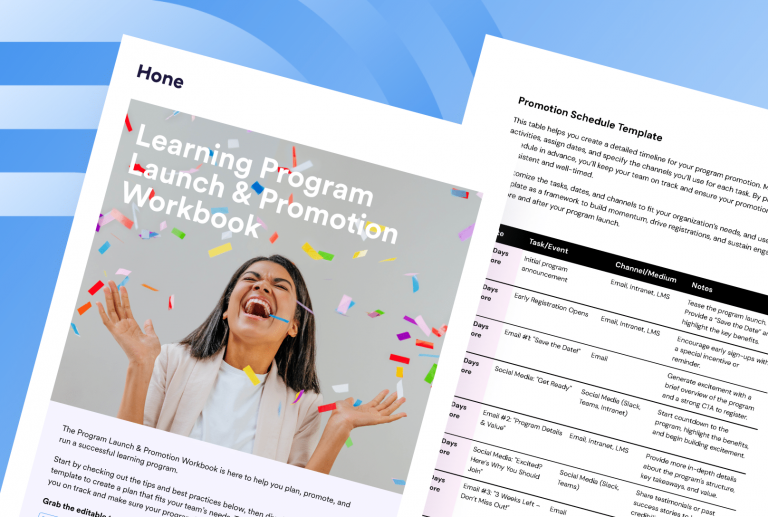What is Offboarding?
The definition of offboarding is a process of disengaging an employee from an organization in a systematic and organized manner, ensuring that all HR and administrative responsibilities are completed and that the employee can leave the organization with a positive experience. It is the opposite of onboarding. It involves activities designed to help the employee transition out of the company and preserve the knowledge and intellectual property they have acquired during their tenure. The goal of offboarding is to manage an employee’s transition in a manner that is respectful and professional, protecting the interests of both the employee and the organization.
Effective offboarding processes settle employment details. But they also allow employers to understand their employees’ experiences. As onboarding starts the employer-employee relationship, offboarding ends it. Both processes have similarities, such as meetings and paperwork.
What is the Offboarding Process?
Offboarding activities vary by industry, organization, employment type, and separation reasons. For example, employers have different processes if the employee resigns or retires versus firing them.
Typical components of offboarding include:
- Exit interviews
- Completing paperwork
- Deactivation of passwords and access rights
- Returning equipment
- Transferal of the employee’s job responsibilities
For example, the organization may want to know why an employee quits. This information helps employers keep a high-valued workforce or convince workers to stay.
Offboarding could help the business to avoid problems if it fires an employee. For example, the process could involve retrieving identification badges.
Why is the Offboarding Process Important?
Offboarding is essential for creating smooth transitions. For example, it may aid when transferring the responsibilities of a leaving employee to a new hire. And it can keep outgoing workers and employers on good terms.
Departing employees can:
- Finish projects
- Share professional insights
- Assist new employees
- Be a vital resource until departure day
- Return to the company later
The process minimizes productivity disruption. It also protects the company’s reputation, confidentiality, and security.
Offboarding can show that the organization values current and prospective employees. In addition, a facilitated process can develop a positive company culture.
Former employees are either advocates or critics after they leave a company. They can speak highly of the organization and refer prospective talent. Or they can express unpleasantness and hurt the business’s reputation.
Offboarding can compel separating employees to be advocates with a positive relationship. The process reduces the risk of misunderstandings after the employee leaves. Each party can part ways with prospects to develop, grow, and network.
An Offboarding Best Practices Checklist
Offboarding complexity depends on the organization. For example, HR departments have an easier time when there is a plan. And employees may enjoy the process when they know what to expect. However, it’s the business’s responsibility to facilitate the transition. HR must communicate the change to the remaining workforce and plan to fill the position. Depending on the reason for separation, the employee’s responsibilities can vary. For example, communication and security may not directly involve the departing employee. However, the team should be aware of a member leaving for productivity reasons. And improper offboarding could be a security risk, from data loss to confidentiality breaches.
An offboarding packet includes documents and an explanation of their purpose. For example, if the company laid off an employee, it might consist of outplacement services.
Here’s a checklist of best practices for offboarding employees:
- Planning and preparation: Develop a clear offboarding plan and timeline, and communicate it to the relevant stakeholders.
- HR documentation: Ensure all HR-related documentation is complete and up to date, including performance reviews, exit interviews, and termination paperwork.The transition of responsibilities: Identify and assign responsibilities to other employees to ensure a smooth work transition.
- Knowledge transfer: Encourage the outgoing employee to share their knowledge and expertise with the team before they leave.
- IT security: Ensure that all IT systems and access privileges are
Virtual Offboarding Communication
Virtual offboarding is for remote workers or those unable to complete the process in person. HR representatives and employees can complete the activities via telecommunication technologies.
For instance, employees can receive and return paperwork via email. In addition, although exit interviews seem like difficult conversations to manage remotely, they can be video or phone conferences.
Businesses may have additional steps for remote workers departing employment. For example, the HR department may need to provide postage and packaging for equipment returns.
An organization may choose virtual offboarding if there are massive layoffs. This is because it may be less time-consuming and more straightforward with many terminated employees.
Offboarding Email Templates
Offboarding emails should match the company’s tone. They should also be sensitive to the employee’s reason for separation.
1. Email an invitation for an exit interview
Dear [Employee’s name],
We want to schedule an exit interview with you for [date and time] in the [venue]. An exit interview gives us insight into your experience at [Company name].
We present all exit interview feedback to management in a summary report. It will provide leadership with knowledge on improving our workplace for current and future employees. But your responses are confidential, and we will not place them on your file.
Feel free to reply to this email if you have any questions or need to reschedule.
We look forward to talking with you.
Best regards,
[Your name]
[Company name]
2. Resignation acceptance email
Dear [Employee’s name],
It is with great regret that we acknowledge the receipt of your resignation on [date]. We approve your resignation from [position held] at [Company name] effective on [date]. We appreciate your contributions and wish you all the best in your future endeavors.
Under company policy, you are to [information about offboarding procedure] on or before [date].
Best regards,
[Your name]
[Company name]
3. Employee termination email
Dear [Employee’s name],
We are sorry to inform you that as of [date], you will no longer be an employee with [Company name]. This decision is the result of [reason for termination]. We wish you luck in your future endeavors.
You will receive compensation and benefits until [date]. And we will provide payment for your accrued paid time off. After that, the accounting department will resolve your final disbursement.
Under company policy, you are to [information about offboarding procedure] on or before [date].
Best regards,
[Your name]
[Company name]
4. Departing Employee Email for Staff
Dear [Company name],
This email is to inform you that [Employee name]’s last day at [Company name] is [date].
[Employee name] has been an employee for [time at the company]. We appreciate all [his/her/their] contributions to the company’s growth.
Please join us as we say our farewells to [Employee name] on [date] at [time] in the [place].
From [date], [interim employee name] will be taking up [Employee name] position until we secure a replacement.
Best regards,
[Your name]
[Company name]
A Virtual Offboarding Checklist
A virtual offboarding checklist typically includes the following steps:
- Finalize payroll and compensation: Ensure the employee’s final paycheck and any outstanding compensation are processed.
- Return of company property: Ensure the employee returns any company-owned equipment, such as laptops or mobile phones.
- Transfer of knowledge: Arrange for the employee to transfer their knowledge to colleagues and document essential processes.
- Access removal: Disable the employee’s access to company systems, including email, virtual work platforms, and company databases.
- Review and archive: Review and archive the employee’s work and projects for future reference.
- Exit interview: Schedule a virtual exit interview to gather feedback and provide closure for the employee.
- Feedback and reference: Provide feedback to the employee and serve as a reference if requested.
- Celebrate achievements: Acknowledge and celebrate the employee’s contributions and achievements during their time at the company.











